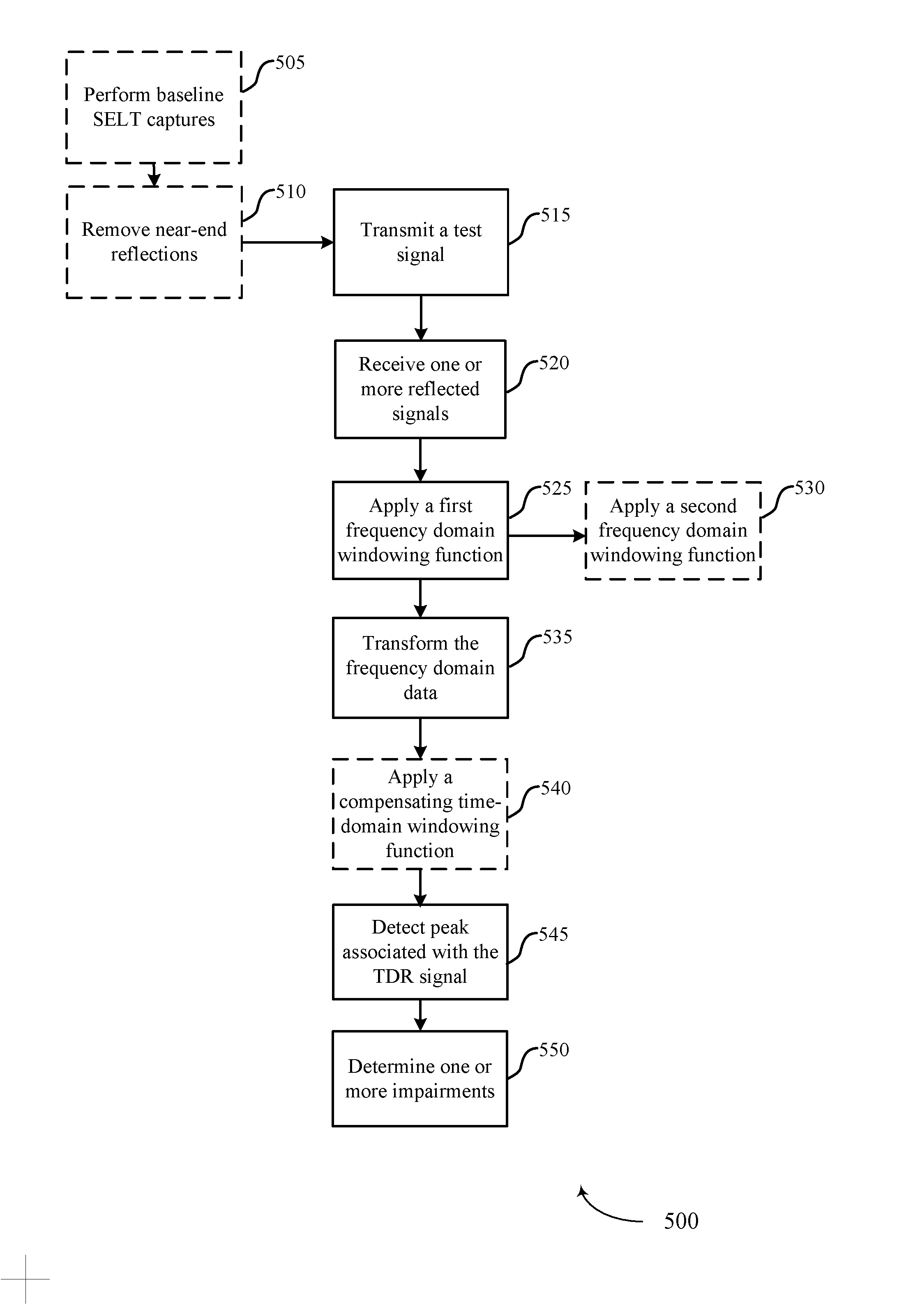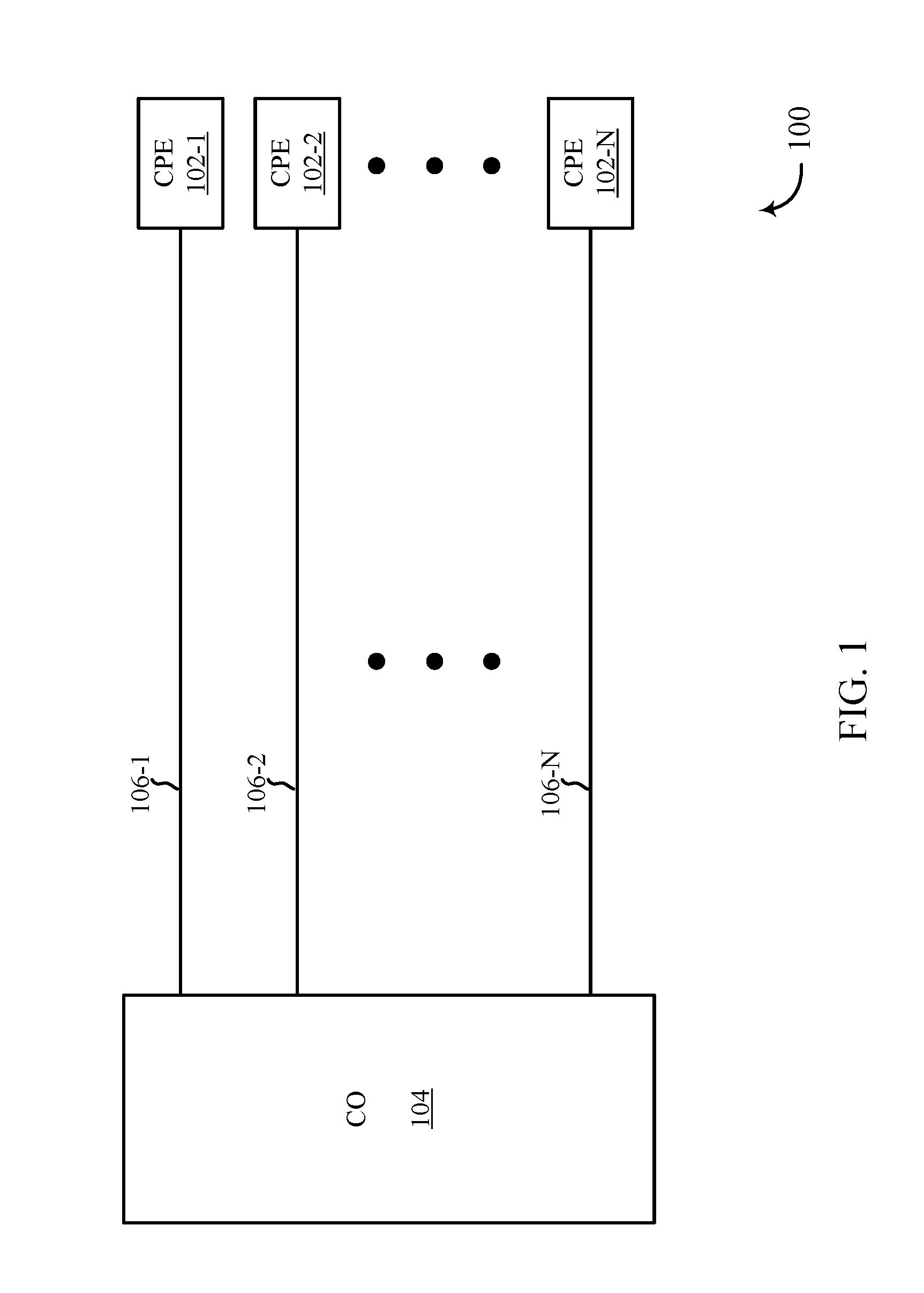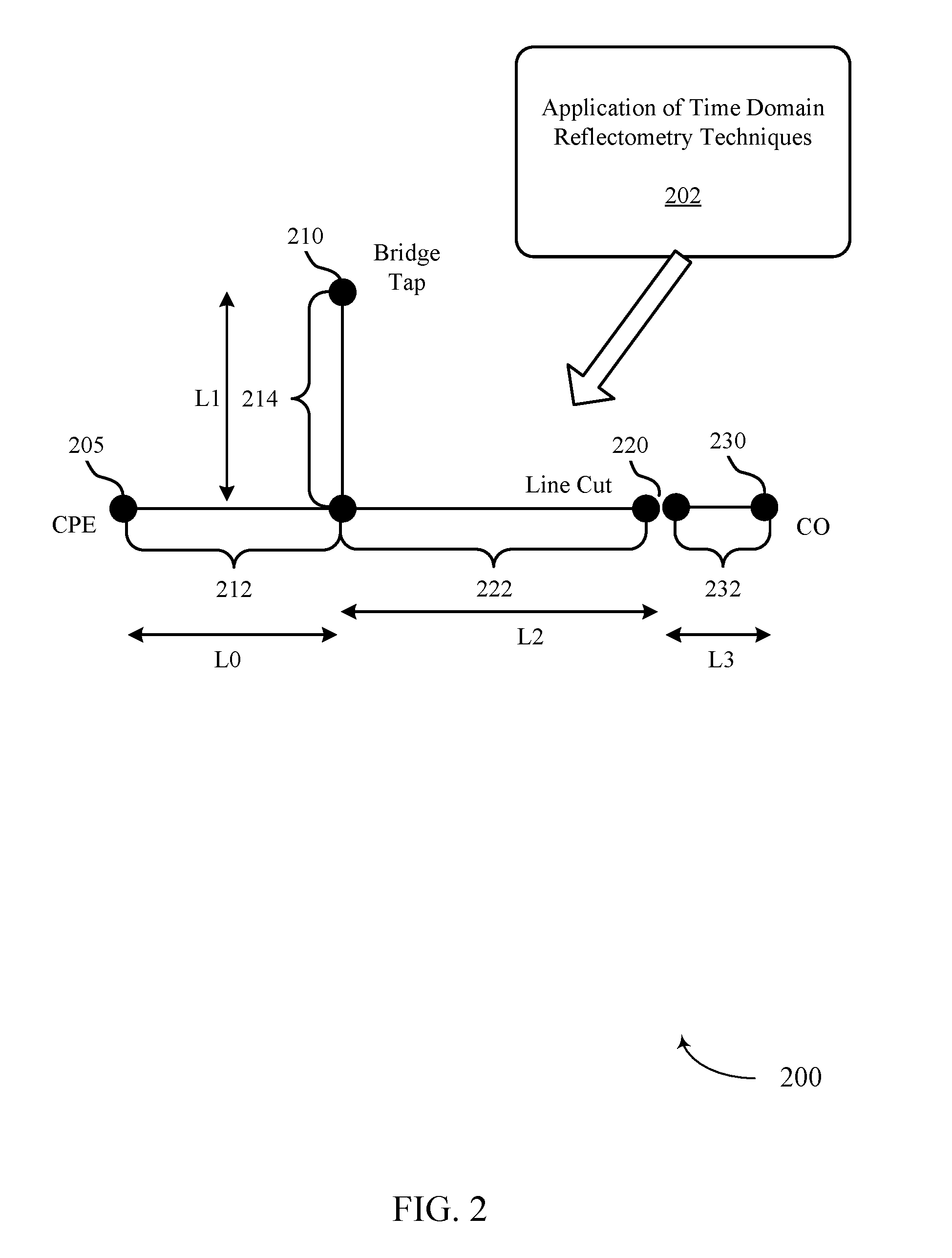Detecting transmission line impairments using reflectometry
a technology of transmission line impairment and reflectometry, which is applied in the field of data communication, can solve problems such as the inability to accurately detect and locate impairments using selt processes
- Summary
- Abstract
- Description
- Claims
- Application Information
AI Technical Summary
Benefits of technology
Problems solved by technology
Method used
Image
Examples
Embodiment Construction
[0033]According to aspects of the present disclosure, a test device for detecting impairments on a Digital Subscriber Line (DSL) using time domain reflectometry (TDR) techniques enables accurate detection and location identification of impairments on the DSL line, including detection and location identification of multiple impairment on the same DSL line (e.g., identifying and locating a bridge tap, as well as identifying and locating a line cut on the same DSL line even in the presence of the bridge tap). Accurate detection and location of bridge taps, line cuts, line card terminations (or termination conditions), and other impairments are important because these impairments can reduce the achievable data bandwidth on the DSL line. For example, a bridge tap is an extraneous dangling cable connected to the main line as a “T” or a branch that causes an impedance mismatch and signal reflections, which may lead to a loss in bandwidth capacity on the DSL line.
[0034]The test device utili...
PUM
 Login to View More
Login to View More Abstract
Description
Claims
Application Information
 Login to View More
Login to View More - R&D
- Intellectual Property
- Life Sciences
- Materials
- Tech Scout
- Unparalleled Data Quality
- Higher Quality Content
- 60% Fewer Hallucinations
Browse by: Latest US Patents, China's latest patents, Technical Efficacy Thesaurus, Application Domain, Technology Topic, Popular Technical Reports.
© 2025 PatSnap. All rights reserved.Legal|Privacy policy|Modern Slavery Act Transparency Statement|Sitemap|About US| Contact US: help@patsnap.com



